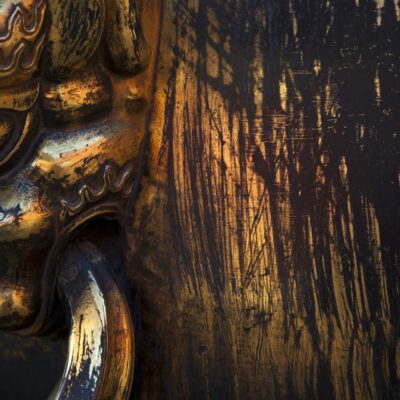Beijing

Immense skyscrapers and hypertrophic technology invade the streets, creating a network of people always on the run and relationships increasingly free from a specific time or place
Immense skyscrapers and hypertrophic technology invade the streets, creating a network of people always on the run and relationships increasingly free from a specific time or place. The huge cement buildings group humanity into vertical pillars. Modernity and its optimization of spaces and functions define new paths and models of life, with lights always on as spotlights on a stage with unaware actors. If you get lost in Beijing, this is your first impression of the advanced and cosmopolitan capital. However, on closer observation, every element seems to carry engraved an ancient culture, made up of dynasties and intellectual knowledge. Sampling piece by piece its material, drawn from the most diverse places and objects, one would discover that each part strongly vibrates the DNA of Beijing. Its helical spiral embraces a system of art, politics, and history that has always influenced the entire universal scenario.
Because Beijing is transforming. It is with its Opera, a theatrical representation born in the XVIII century that mixes forms of art, masks, and allegories, but also with its urban structure, that seems due to a strange transfer to represent the entire cultural heritage of the city. Among its characteristic streets, one loses the direction, and it is difficult to identify what is the cause and what the effect is. Does architecture shape social relationships and traditions, or do they define the built structures?
The hutong, labyrinthine alleys of ancient Beijing, branch out in the heart of the city like a network that maintains soul and traditions of daily life. It is characterized by markets and outdoor games, gossip among inhabitants, and a sense of community. The term derives from the Mongolian word hottog, well, because the first neighborhoods and streets of the city were built around small water sources.
But if the hutongs are the tracks on which these centuries-old stories run, the most interesting parts of Beijing are the connection points: the siheyuan. The siheyuan represents the city in its minimal and most intimate form, a rectangle that means family, values, and support.
The symbolic and the practical, the public and the private, the modern and the ancient, the concreteness of cement, and the poetic flexibility of bamboo
The traditional courtyard houses bear the evolution of time imprinted on their walls but retain inside the magic of family culture, linked to a name and dignity, and the philosophy of a city home that naturally separates the public dimension from the private. Siheyuan is a type of combined architecture, a large, bright courtyard, and houses on four sides connected by a corridor. It encloses an intimate and lively atmosphere, a unique harmony between all things, in a world apart, hidden from the outside gaze thanks to a single door, usually painted in vermilion red and accompanied by lions for protection against the deep-rooted beliefs about mythological spirits and souls.
Oriented according to the rules of feng shui and the five elements, that in the cultural imagination compose the universe, the siheyuan embodies traditional Chinese morality and Confucian ethics. Four buildings in a single courtyard receive different amounts of sunlight that define a social hierarchy and a precise division of functions of the spaces. Despite its antiquity, the siheyuan is an engineered structure with north-western walls higher than the others to protect the interior buildings from the strong North China winds in winter and rippled roofs to provide shade in the summer while keeping the heat in the winter. This traditional Chinese architecture is at risk of extinction in a constantly growing metropolis like Beijing. It is now experiencing a rediscovery as a modern version of a Villa with elements of contemporary design and a greater emphasis on the central private garden.
The same DNA is found in the magnificence of the Forbidden City, a former imperial palace that occupied the center of Beijing’s ancient fortification system, one of the largest complexes in the world. Surrounded by walls almost 8 meters high with the function of protecting and supporting the residential buildings, the “purple city” has four corners from which stand out four towers with roofs of 72 crests, reproducing the iconography of the Yellow Crane Pagoda and the Prince Teng Pagoda. Here too, the macroscopic and microscopic arrangement of each element reflects meticulous planning. Planning is based on philosophical, religious, and mythological principles. First of all, demonstration of imperial power, with the roofs of the Forbidden City colored with the emperor’s yellow. Among the symbols linked with the color of the roofs, noteworthy is the black one of the Palace of Literary Glory, associated with water, for the protection from fire, and the green tiles of the residence of the crown prince, to wish a quick and solid growth.
Beijing lives every day this extraordinary balance between forces in apparent contrast, that return to equilibrium after every movement and innovation, reinforcing, rather than eliminating each other
Architecture as a form of communication and celebration of its tradition permeates also the Summer Palace, one of those extraordinary parks, as the Beihai, where nature and imperial palaces compose an ecosystem in total harmony. The artisans reproduced in the Summer Palace a mixture of architectural styles from different buildings located throughout China as if they wanted to collect the incredible cultural wealth within the geographical borders.
Beijing lives every day this extraordinary balance between forces in apparent contrast, that return to equilibrium after every movement and innovation, reinforcing, rather than eliminating each other. The symbolic and the practical, the public and the private, the modern and the ancient, the concreteness of cement, and the poetic flexibility of bamboo.
Immense skyscrapers and hypertrophic technology invade the streets, creating a network of people always on the run and relationships increasingly free from a specific time or place.